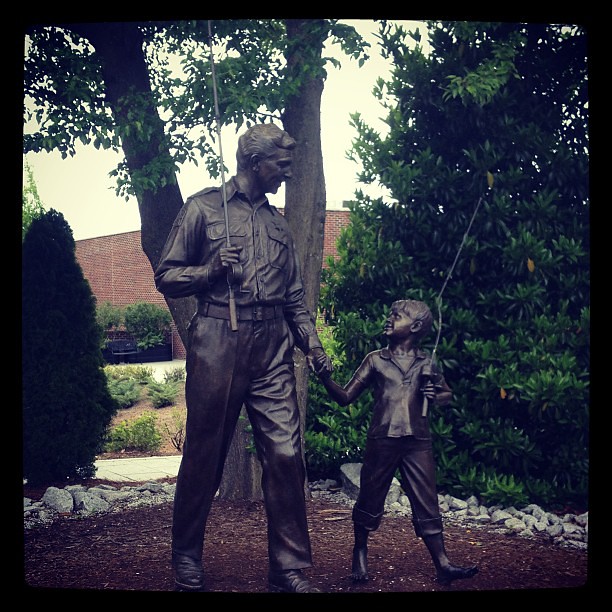Last week I taught a live workshop for a bunch of artists on Social Media for Beginners, and I think I wasn't quite what they expected. I didn't start by talking about Twitter, or Facebook or about how to post a status update. I started by talking about a path of connection to your customers.
Because social media, blogs, and even websites are completely pointless unless they are part of a path that brings a potential customer closer and closer to you and your products.
If the only Real Work in your day is to connect or to create, then everything you do to connect…should actually be effective at connecting. My favorite piece of a path doesn't actually include social media at all – it's your email list.
You know, the place where people who want to learn more about your work sign up to get updates or news or stories from you? I'm not talking about cold-calling via emailing, or even subscriptions to your blog. I'm talking about giving interested people a way to connect with you directly, and then sending those people regular messages.
Why is this so effective?
It's direct. When you send an email to your list, it is going directly to the people who have asked for it. Unlike a blog, where they have to visit you, or social media, where only a few people are online to see it at a time, an email is delivered to them. So you don't have to hope or wonder if they saw it.
It's desired. If you clearly explain what they're signing up for…and then you send them exactly that, your messages are wanted. You never have to worry if the people really want to hear about your new project, of course they do! They signed up to hear about it!
It's conversational. While it's easy to lurk on blogs or skim tweets, an email inbox is a place of conversation. We're used to opening, reading and then responding to the messages we get there. So when you send an email, you can ask questions and expect answers (especially if you ask about them and not you.) And these conversations can guide everything you do – they help you know your real Right Person, they can inform what you make next or suggest where to sell.
It's foundational. You can start a conversation in today's email and continue it for three or four weeks (or a whole year!) Using autoresponders, you can create a whole series, so that every new person that signs up, gets the same messages in the same order, ensuring that everyone sees your best work or your introduction or gets to know you before you take the conversation deeper.
I know lots of makers avoid starting (or using) an email list because they think of it as another To Do to add to their week. But what if it wasn't? What if you could create the content once, have it delivered automagically to every new member, and then not worry about it until you had something new to say? This is why I love autoresponders (an email series sent automatically when someone joins a list or buys a product). Creating content can be as easy as collecting up your best blog posts or chunking up your about page and BAM! You've got a tool that introduces new people to your work and starts new conversations, without any extra work from you. It's a clear and easy step on the customer path that can be automated without losing any of the connection or honesty.
I've been getting questions about them from Starship members, so I created a little class about using this tool in your customer path. I'll be sharing the first video lesson with you here, tomorrow, for free. You can subscribe here to be sure not to miss it.


Tracey Rediker
May 16, 2013 at 9:23 am (13 years ago)I do send out a newsletter with posts from my blog once a week. I cant get people to sign up for it! mrrr 🙁
Tara Swiger
May 16, 2013 at 9:27 am (13 years ago)Tracey – That can be frustrating!
There’s a few things to explore if you’re not getting the sign-ups you want:
1. How many people are really seeing it? (CraftyPod.com’s Google Analytics class can help you figure this out)
2. Is it obvious and clear that THIS is the action you want people to take? (ie, is it at the top of your site, easy to locate on other pages like “About”)
3. Do you explain the WHY and WHAT to people? (ie, what’s their motivation for signing up? What’s the benefit? If it’s not compelling enough, could you add something to sweeten it?)
I’ve found, with the people I’ve worked with that blog-post-only newsletters aren’t as effective (at encouraging action in the subscribers) as new content that is one step *beyond* your blog posts. Think of these people as slightly better friends, or slightly more invested readers — you can have deeper or longer conversations, or show them something new, or …there are a zillion ideas!